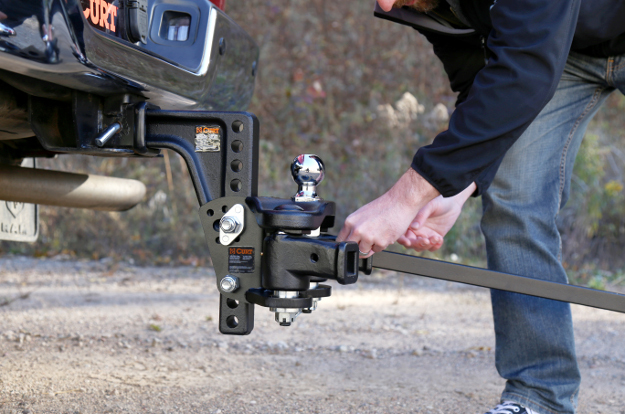Preparing the vehicle for trailer hitch installation can save time and money in the long run. Make sure it is in a safe place, and all parts and tools are on hand before you begin.
Some hitches require that bolts or plugs be removed from the vehicle’s frame. If you are uncomfortable with this, a professional may need to be hired, adding to the project’s overall cost.
Table of Contents
Increased Towing Capacity
Most vehicles are designed with a maximum towing capacity. It would help if you made significant modifications within these limitations.
Installing a trailer hitch is the most obvious way to increase your towing capacity. There are several different types of hitches, and they are rated for various weight capacities.
Consider upgrading the suspension system on your vehicle to handle the additional weight of a trailer. Heavier-duty struts and shocks will support the extra load and give you better towing performance.
Another way to improve your towing capacity is by making powertrain modifications like a programmer or tuner. These upgrades will allow your engine to produce more power and torque, allowing you to tow heavier loads. It is also essential to upgrade your brakes to handle the added stress, heat, and friction from hauling a trailer.
More Storage Space
A hitch can help you make the most of the cargo space in your vehicle. While some drivers choose to strap luggage to the roof of their car, many others take advantage of hitch storage systems like cargo boxes and racks.
A receiver hitch, the most popular type of trailer hitch, mounts to a vehicle’s rear bumper and offers a solid connection for towing. It’s also an excellent option for adding rooftop luggage carriers, kayak racks, bike racks, and more.
To install a trailer hitch at home, you’ll need safety gloves and goggles to protect your eyes, a screwdriver set with various sizes for the bolts, a socket wrench or receiver tube wrench to tighten the nut, and a torque wrench to ensure the nut is securely fastened according to the manufacturer’s specifications. You may also need a jack and jack stand to support the vehicle while working underneath it.
Easier Access to Cargo
A trailer hitch makes it easier to haul cargo like bikes, kayaks, and tools that won’t fit in your trunk. You can also use a cargo carrier that hangs from your hitch like a shelf. This is especially useful for families who take frequent road trips and need much extra storage space for gear.
Before starting your hitch installation, cleaning the bolt holes on your vehicle’s frame is essential. Soak them in WD-40 to remove grease and dirt.
After you’ve cleaned the hole, insert the hitch ball mount shank into the receiver tube you installed on your vehicle and secure it with a hitch pin and clip. Then, reattach the coiled fish wire to the bolt and pull it down so the stud passes through the spacer.
Better Fuel Economy
Adding a trailer hitch allows you to haul cargo, equipment, and more that is often heavier than your vehicle’s max capacity. That extra weight requires more energy to accelerate and decelerate, especially on hilly terrain or in traffic. That’s a lot of wasted gas.
A simple way to improve your fuel economy is to reduce the weight you carry. It could mean taking out unnecessary items or driving slower on the highway, which can save a substantial amount of gas over time. Another thing you can do is to make sure your tires are correctly inflated. Tires with consistent pressure offer less resistance, which means more gas savings. A professional hitch installation is a great way to ensure all these things are done correctly.
More Comfort
A trailer hitch enables you to tow various attachments, carrying more cargo without filling your trunk or renting expensive trucks for road trips and moves.
You can increase your trailer’s Gross Trailer Weight (GTW) capacity by utilizing a weight distribution system with your hitch. These systems also improve sway control and distribute load weight more evenly, improving safety.
Before you start the installation process, read the instructions carefully and have someone assist you. You may need to remove parts like the spare tire and exhaust system, which can obstruct your hitch. Also, you might have to trim fascia on some vehicles. Once everything is back in place, you’ll be ready to use your new hitch!





